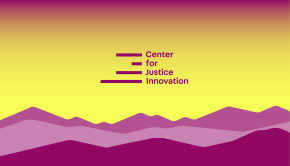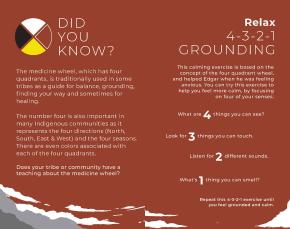
Native children navigating the child welfare system are uniquely vulnerable. Read about the recent Supreme Court decision that protects their right to stay connected to their families and communities—and the smaller, no less inspiring efforts to support them on the ground.
Blossom Lavone was just three years old when she was abruptly torn away from her family and placed in a stranger’s home for what she was told was her own good. Just a week prior, her mother had sent her off from their home in South Dakota’s Rosebud Sioux Reservation to spend some time with her aunt in California. By the time her mother made it to California to join them, Blossom had been taken away.
The caseworkers who placed Blossom in a pre-adoptive home had no evidence that the three-year-old was in danger. Their only reason for separating her from her family? A poor household in a Native American reservation wasn’t a “suitable” environment for a child.
This is just one story of injustice among countless others that gave rise to a collective effort to protect Native American families from state-sanctioned separation. While Blossom’s mother managed to win back custody of her daughter in court, it wasn’t until the passing of the Indian Child Welfare Act in 1978 that Native families across the United States could rely on a solid legal framework to protect them from similar injustices.
The Indian Child Welfare Act (usually shortened to “ICWA”) protects Native children from being separated from their families and from the traditions they grew up with. Not only does it keep Native families together by ensuring that states can’t remove Native kids from their homes arbitrarily, but it also gives preference to adoptive parents who are Native themselves if there is a legitimate need to place children in a different home. Just as crucially, it promotes tribal sovereignty by acknowledging tribes’ significant decision-making power in custody cases.
After more than 40 years since ICWA’s passing, these long-standing protections recently came under attack in a case that made it all the way to the Supreme Court. Families and advocates watched with anxiety as Native children’s right to stay in the care of their families and communities hung in the balance.
In a 7-2 decision in Haaland v. Brackeen, the court definitively ruled to keep ICWA in place. The decision fortified the Act, and other laws meant to protect tribal sovereignty, from future challenges of the same kind.
The significance of this decision for Native families and communities cannot be overstated. Before ICWA, research showed that 25 to 35 percent of Native children were taken away from their families—often because non-Native caseworkers mistook common child-rearing customs, like leaving children with extended family, for failures in parenting. Most of these children were then placed in non-Native households, all but severing their ties with the traditions they grew up in.
By keeping Native kids connected to their families and communities, Haaland v. Brackeen protects these cultural traditions from being lost entirely. After all, as Tribal Chief of the Mississippi Band of Choctaw Indians noted before Congress, children are “the only real means for the transmission of the tribal heritage.” Without children to carry them on, many Native traditions are themselves in danger of disappearing.
At the heart of this landmark decision was an affirmation that unique needs call for unique responses. That same principle guides the work of our Tribal Justice Exchange, which helps tribes across the country strengthen their justice systems using resources from their own traditions. A growing body of evidence suggests that the punitive approach to crime that has historically prevailed in the United States is not working. But this approach is especially harmful in American Indian and Alaska Native communities, which had their own traditions for resolving conflicts long before colonization.
For tribal sovereignty to be fully realized, it’s not enough for tribes to have their own jurisdictions. Communities also need to be able to realize justice on their own terms—not according to the standards of an impersonal system they had no hand in creating.
This same need for culturally appropriate responses underlies the supportive graphic novels we helped to create for Native kids navigating the child welfare system. The booklets, each made for a different age group, guide and empower children with storytelling, illustration, and coping exercises. Created in part by Native artists and authors, they draw on teachings from a variety of Indigenous American traditions.

One booklet, Edgar's Journey, includes a relaxation exercise based on the medicine wheel—a symbol used in many tribes.
The graphic novels even teach kids about ICWA itself—what it is, why it’s important, and what it might mean for themselves and their families. These are questions that need to be addressed, since—even though ICWA is there to protect children’s rights—it can introduce conflicts over jurisdiction that can confuse and overwhelm kids even more.
Alongside the grand victory of Haaland v. Brackeen, these booklets are a small but powerful resource to make sure that Native children navigating the child welfare system have the support they need—and that it comes from the traditions closest to them.
For more:
- See here for personal stories about how the Indian Child Welfare Act has changed the lives of Native children and their families.
- Check out a webinar on the Haaland v. Brackeen decision here.
- Visit tribaljustice.org to learn more about the impactful work of our Tribal Justice Exchange team.

